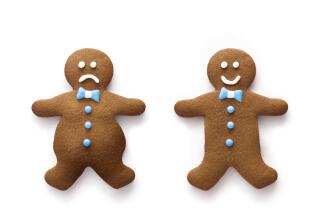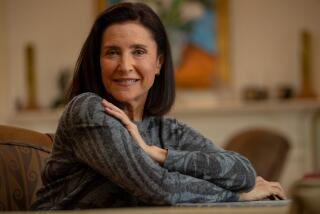The Bones of Contention
- Share via
I’ve never paid much heed to my bones. I’ve fretted about my flesh, but not my skeleton. Recently, however, every time I pick up a magazine (and I don’t mean just Modern Maturity), I see a reference to osteoporosis, the insidious disease that thins and weakens bone tissue. Women are most at risk, especially those who are postmenopausal. I feel as if my own bones are dissolving into dust while I’m reading about this crippler.
Bone mass peaks somewhere between ages 25 and 35. After that, the best you can hope for is to hold on for dear life to what you have. For many of us in our 40s and 50s, the bone-building years coincided with the Twiggy era. We starved ourselves, trying to emulate the frail beauty of the skinny British model. I remember living for months on what was called the “blitz” diet. Breakfast, lunch and dinner were the same: one cup of cottage cheese, two squares of Ry Krisp, three peach halves. Cottage cheese is calcium-rich, but I usually skipped that part of the meal. Are my resulting bones as brittle as Norwegian crispbread?
The one sure way to measure bone loss is with a bone density test. I talk to a couple of doctors about it. One urges me to have the evaluation. The other says dismissively that there’s no reason for a woman to undergo the test if she hasn’t yet “been struck by the change.” But everything I read tells me that the acceleration of bone loss can begin before menopause. I decide to take the test.
You know how you frantically floss your teeth before your dental checkup even though you’ve ignored them for months? In the weeks before the scan, I pop calcium pills, down quarts of yogurt, snack on canned sockeye salmon, bones and all. Mostly I despair that my infrastructure might resemble a bunch of old loofahs.
The test is quick, painless and safe. But at $250, it’s not cheap. Some health plans will pick up the cost; most won’t. When I arrive at the hospital’s radiology section, I’m asked to take off my clothes and put on two robes, one frontward, one backward. I look like an escapee from somewhere dangerous. Then I lie on a table while the test, using a small dose of radiation, determines bone thickness in my spine and hip.
The results arrive in two weeks: I have some bone thinning. Maybe I haven’t yet joined the 25 million Americans affected by osteoporosis, but I’m on the waiting list. My doctor tells me to continue to exercise, ingest calcium, hold the salt, not smoke (I don’t) and get tested again in a year. He also says I should start thinking about the benefits (and hazards) of hormone therapy once my estrogen ebbs away.
As Dr. Robert Heaney of Creighton University in Omaha has pointed out, “Calcium deficient diets or anorexia can lead to osteoporosis. “Many women of my generation have ended up with low bone density because we worshiped slenderness. Some have achieved full Twiggishness. Their limbs are sticks, easily snapped and broken. Lately, Kate Moss has revived the waif look. And once again, young women prize thin thighs more than strong, elastic bones. Twenty or 30 years hence, the disease may be dubbed “Mossteoporosis.”
Women must change their frame of mind about their frames. I used to think that “good bones” meant photogenic ones: chiseled cheekbones, delicate wrists, Bambi ankles. I longed to have my mother’s elegant legs. Now I look down fondly at my sturdy knees. My father’s knees. He fell from a high ladder onto a concrete floor a few months ago, dusted himself off and climbed back up. He’s 82. That’s “good bones.”

